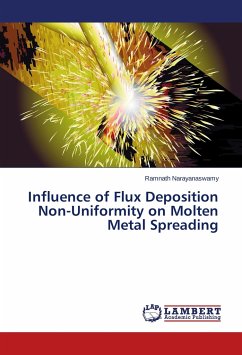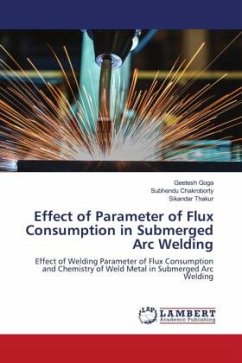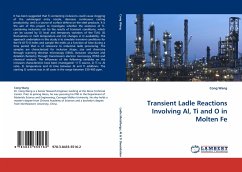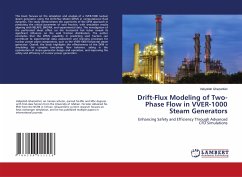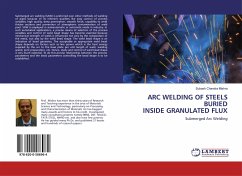The objective of this book is to study the effects of flux deposition non uniformity on spreading of molten metal. Flux deposition non-uniformity here means as to whether the amount of flux deposited in a non-uniform or uniform pattern helps in the better wetting and spreading characteristics of the molten metal or is detrimental to the process. The study was carried out by conducting a number of Hot Stage microscopy tests using aluminum silicon alloy as the filler metal and Potassium Fluoro Aluminate (Nocolok®) as the flux. The flux was applied in different spatial distribution patterns to uncover the varying effects of its distribution on spreading.It has been concluded that non uniform flux deposition does not necessarily mean uneven or less uniform spreading of the molten liquid metal if the spreading of the molten flux is beyond the distance of ultimate metal spreading. This is because, in spite of uneven flux deposition, the flux melts approximately at 560°C-570°C and spreads on the surface of the metal thereby promoting appreciable spreading and wetting of the molten liquid metal that happens at temperatures above 577°C.
Bitte wählen Sie Ihr Anliegen aus.
Rechnungen
Retourenschein anfordern
Bestellstatus
Storno

